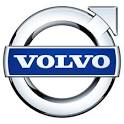XC70 L5-2.5L Turbo VIN 59 B5254T2 (2003)

-
to connect the controlled component to the nearest control module
-
to download software to alter the configuration and programming of the network.
The length of the wiring and the number of components which are introduced with the car are less than previously.
An example of this is the addition of cruise control for the car.
Before the introduction of the network the installation of control modules, switches, vacuum pumps, vacuum servos, hoses and cable harnesses was
necessary.
With the network only the installation of a switch and the downloading of software which alters the configuration of the car is required.
Easier to introduce logical functions
-
Logical functions can be explained as "if this occurs then the following corrective action must be carried out". For example, the system is
programmed so that if a tail lamp is broken, a message is transmitted via the Controller area network (CAN) to the driver information module to
warm the driver.
-
All that is required to introduce a logical function is to change the programming of the affected control module-the rear electronic module and
driver information module in the example above.
-
Introduction of logic functions does not increase the number of components or cables.
Easy to adapt the system to customer and market requirements
The functions can be altered depending on the requirements of the customer and market. An example of this could be fog tail lamps. Certain markets use
two fog tail lamps, others only use one on the driver's side. Previously it was required that different replacement parts were stored for different markets.
Now the same replacement part can be used for all markets, by changing the programming depending on the market.
Similar basic systems can be used for a whole model program
Similar networks (hardware) can be used for a large number of different cars.
The only thing which differentiates the cars is:
-
the components (control modules, sensors controlled components etc.) which are connected to the system
-
Which components do what
-
Which components/functions are standard/optional/accessories
-
The configuration/programming of the system
The Network Construction
General
The network is made up of a number of control modules (sometimes called nodes)which are connected to each other serially via two communication
cables. Each control module is supplied with power and grounded individually and receives messages/commands via the two communication cables. In
both networks (high and low speed sides) the control modules are serially connected. In the event of an open-circuit those control modules beyond the
open-circuit will not be able to communicate with other parts of the network.
High and low speed sides on the network
The network consists of two parts. A high speed side which transfers (HS CAN) signals/messages between the central electronic module and the control
modules in the engine compartment, and a low speed side (LS CAN) which transfers the signals/messages between the central electronic module and the
control modules in the passenger compartment.
The interface between the high and low speed sides is supplied by the central electronic module which speeds up or slows down the communication
between the two network sides.
Transfer speeds
The Volvo Controller area network (CAN) has two transfer speeds.
-
HS CAN (High speed) has a transfer speed of 250 Kbps
-
LS CAN (Low speed) has a transfer speed of 125 Kbps.
1 Kbps = 1024 bit per second (1byte = 8 bits).
For serial communication (Volcano Lite) between a control module and a slave control module the transfer speed is 10.4 Kbps. Terminating resistor To
prevent electrical reflections and interference in the Controller area network (CAN) there are terminating resistors which bridge CAN H and CAN L.
One in each end point on both the high and low speed side of the network. Each terminating resistor has a resistance of 120 ohm.
-
The terminating resistor for the high speed Controller area network (CAN) is positioned in the brake control module/ABS control module and in
the engine control module (ECM) or electronic throttle module. The terminating resistor is in the engine control module, on models without an
electronic throttle module
-
There are terminating resistors for the low speed Controller area network (CAN) in the upper electronic module and the rear electronic module.
Both the terminating resistors create a parallel circuit The following resistors can be measured under specified conditions:
-
When the Controller area network (CAN) is intact the resistance in the network is approximately 60 ohm
